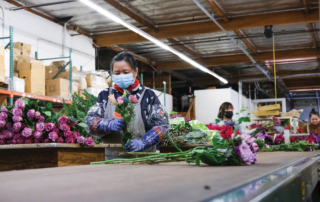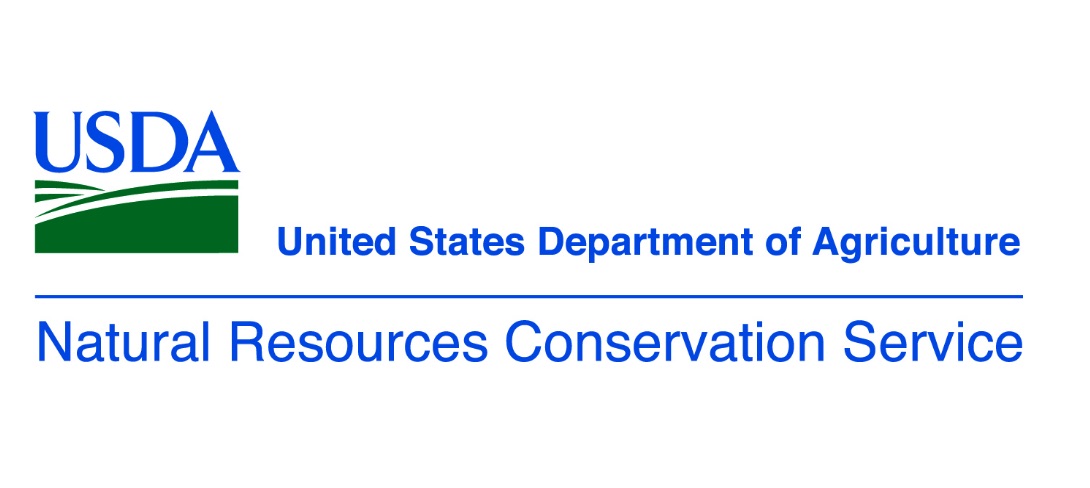Floral Sales Soar as Valentine’s Day Nears
By Caleb Hampton, California Farm Bureau
Fresh cut flowers have seldom been so coveted.
A pandemic-related boom, driven by people beautifying their living spaces while stuck at home, has tapered slightly. But industry experts say a new-found emphasis on self care continues to boost demand, while the upcoming Valentine’s Day promises its usual bump in sales.
“It’s already busy,” Sherry Sanbo, owner of Golden State Floral, a wholesale florist in West Sacramento, said last week. “Right now, we’re trying to buy the product to fill our orders.” Inside her warehouse, clusters of flowers moved down conveyer belts as workers trimmed leaves, stacked boxes and stuffed bouquets.
Across the sector, Valentine’s Day typically trails only Mother’s Day in volume of flowers sold and is often the highest revenue event of the year. “We’re expecting a good, strong holiday,” said Steve Dionne, executive director of the California Association of Flower Growers and Shippers, or CalFlowers. “You can feel the rate of orders coming in now compared to prior years.”
Several factors point to a favorable Feb. 14 for flower producers. The day of the week the holiday falls on “has a huge impact on demand,” Dionne said. “If it’s a Saturday holiday, a lot of potential floral consumers may instead opt for dinner and a movie. This year, it lands on a Tuesday, which is one of those perfect days.” That alone, he said, can boost sales by 15%.
Strong demand is always good news for suppliers. However, various phenomena—from weather to inflation to geopolitics—have left many California growers with mounting challenges and shrinking profits.
“At the moment, things suck,” said Rene Van Wingerden, a Santa Barbara County flower farmer who has been in the business for nearly five decades. “Everything just costs more.”
The rising cost of fuel and farm labor have especially impacted growers. Michael Mellano, CEO of Mellano & Co., which farms 400 acres of flowers in San Diego County, said changes to California’s minimum wage and overtime laws increased his costs and “impacted our business significantly.”
In some sectors, rising retail prices have helped offset expenditures, but in many—including cut flowers—producers are seeing their margins whittled away. “Most input costs have gone up more than the price of flowers,” Dionne said. According to data from the U.S. Department of Agriculture, wholesale prices for most types of cut flowers were roughly equal this week to the same time last year.
For years, the global nature of the flower market—about 80% of flowers sold in the U.S. are imported—has prevented domestic flower farmers from raising prices in response to local conditions.
At the height of the pandemic, supply chain disruptions and labor challenges caused a worldwide shortage in cut flowers, reducing imports. Now, production in South America has rebounded, and with the war in Ukraine blocking some trade with Europe and Russia, more of those flowers are coming to the U.S.
“Some of our domestic flower growers are being increasingly pressured by low-cost imported flowers that are being moved into the marketplace,” said Camron King, CEO and ambassador for Certified American Grown, a nonprofit trade association representing U.S. cut flower farmers.
“Because of the trade circumstances, countries like Ecuador and Colombia are looking for places to sell their product, and it’s easy to move it into the U.S. market at a low price point,” King said. In some cases, he added, domestic growers are losing clients as buyers opt to import more of their inventory.
For California flower farmers, the series of atmospheric river storms that slammed the state last month further complicated Valentine’s Day business.
“When you have dark weather for four or five weeks, it slows production down,” Van Wingerden said. “The plants are like solar panels. They only work when the sun is out.” The Santa Barbara County farmer said the storms decreased his Valentine’s Day output by about 30%.
“California flower production is definitely going to be much lower than normal for Valentine’s Day,” said Marty Espe, employee-owner at Flora Fresh Inc., a Sacramento-based wholesale florist that sources flowers from more than a hundred California flower farms. “The storm system that came through, and the cold weather after, has severely slowed field production.”
Northern California, the Central Coast and the Santa Barbara area appeared to have been impacted the most, Espe said. According to wholesalers, many of the state’s dahlias and Matsumoto asters were wiped out. Gerbera daisies, because they are delicate and not easily imported, “are one of our strong points,” Van Wingerden said, but those characteristics made the daisies especially vulnerable to the storms.
“A lot of the California crops got hit hard,” said Sanbo, the Golden State Floral owner. “Because it was so cold, the flowers are also too short for bouquets. They have to be at least 25 inches. Now, they’re coming in at 22 inches.” The state’s dianthuses have been especially stunted, Sanbo said.
The losses for California flower growers have left wholesalers scrambling to fill Valentine’s Day orders—and ultimately resorting to more imports. “Our goal is to buy local—to buy California product first,” Espe said. “But when we hit situations like this, we’ve switched gears and are obtaining as much product as we can out of South America.”
Sanbo said Golden State Floral is also substituting California flowers with imports from Ecuador and Colombia, sometimes at a loss, she added, as it is too late for wholesalers to change the prices they’ve agreed with supermarkets and retail florists.
“California produces flowers that go all over the country,” Espe said. “With the number being limited, every wholesaler across the country is chasing product right now to cover their orders.”

































